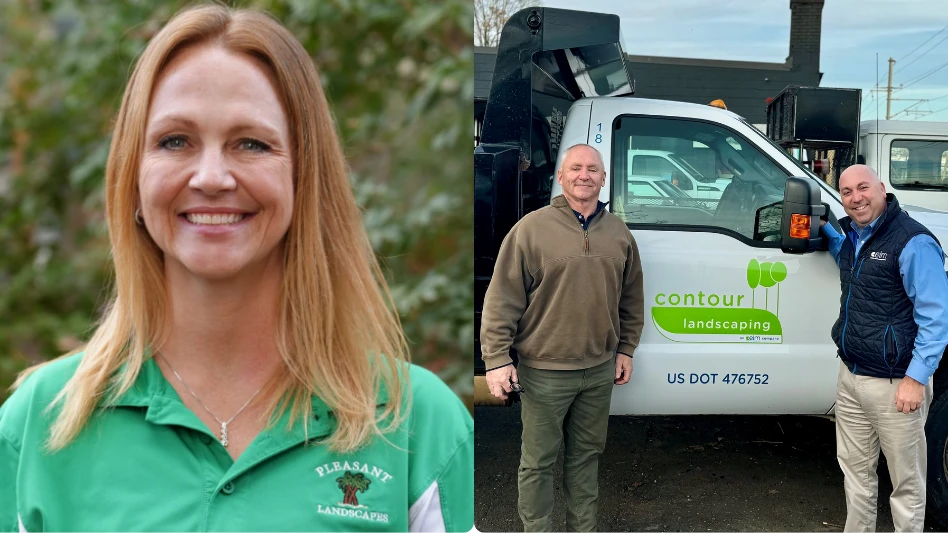
Pictured above is ASLA 2017 Honor Award, Residential Design Category, Telegraph Hill Residence. Photo courtesy of ASLA, Andrea Cochran Landscape Architecture and Marion Brenner.
In 2018, people want sustainable backyard designs, shared outdoor spaces, places in the yard to do yoga and phone charging stations, according to the American Society of Landscape Architects’ (ASLA) 2018 Residential Landscape Architecture Trends Survey.
For the survey, landscape architects were asked to rate the expected popularity of a variety of residential outdoor design elements in 2018. The survey took place Feb. 22 – March 8, with 808 responses. This year’s survey included new types of outdoor amenities that appeal to both single-family and multifamily owners and residents.
Flexible outdoor spaces for activities like yoga and outdoor movie nights as well as charging stations for mobile devices entered the top 10 project types for the first time. Here are the top 10 project types with the expected highest consumer demand:
• Native plants – 83.3 percent
• Native/adapted drought tolerant plants – 83.0 percent
• Low-maintenance landscapes – 80.0 percent
• Flexible use space (for yoga classes, movie night, etc.) – 74.2 percent
• Drip/water-efficient irrigation – 72.4 percent
• Permeable paving – 74.0 percent
• Rain gardens – 71.2 percent
• Reduced lawn area – 70.8 percent
• Food/vegetable gardens (including orchards, vineyards, etc.) – 70.5 percent
• Charging stations (mobile devices) – 70.0 percent
This lineup is virtually unchanged from 2017 except for the additions of flexible-use space and charging stations.
The top three most popular outdoor design elements include the following:
• Fire pits/fireplaces – 66.0 percent
• Lighting – 65.4 percent
• Seating/dining areas – 64.0 percent
Last year’s top three were fire pits/fireplaces (71.5 percent), wireless/internet connectivity (70.8 percent) and lighting (67.8 percent). Wireless/internet connectivity was grouped this year with movies, TV, and video theaters and stereo systems, a lineup that received 48.0 percent of the vote in the outdoor design elements category.
The top three landscape and garden elements are expected to include the following:
• Native plants – 83.3 percent
• Low-maintenance landscapes – 80.0 percent
• Rain gardens – 71.2 percent
In 2017 the top three were native plants (81.6 percent), low-maintenance landscapes (79.3 percent) and food/vegetable gardens (76.5 percent).
The top three outdoor structure category elements include the following:
• Enhanced railing systems (which include those with cable or glass) – 51.0 percent
• Pergolas – 48.3 percent
• Decks – 42.8 percent
Last year, the top three were pergolas (50.3 percent), decks (41.4 percent) and fencing (39.8 percent).
The top three sustainable design elements this year include:
• Native/adapted drought tolerant plants – 83.0 percent
• Permeable paving – 74.0 percent
• Drip/water-efficient irrigation – 72.4 percent
Last year’s top three in this category were almost the same: native/adapted drought tolerant plants (82.3 percent), permeable paving (76.3 percent) and reduced lawn area (72.7 percent).
The outdoor recreation amenities category has been revised this year to include amenity types for both single-family and multifamily residences. Sports courts were broken down into more specific types and labyrinths were removed. The top three types in 2018 include:
• Dog-related recreation areas – 68.0 percent
• Designated areas for other outdoor recreation – 61.5 percent
• Bocce courts – 42.5 percent
Last year’s top three in this category were sports courts (42.4 percent), spa features (39.7 percent) and swimming pools (39.2 percent).
ASLA added a new question about multifamily outdoor amenities this year. The top three trends for this category include:
• Flexible use space (for yoga classes, movie night, etc.) – 74.2 percent
• Charging stations (mobile devices) – 70.0 percent
• Bike storage – 69.9 percent
Latest from Lawn & Landscape
- LawnPro Partners acquires Ohio's Meehan’s Lawn Service
- Landscape Workshop acquires 2 companies in Florida
- How to use ChatGPT to enhance daily operations
- NCNLA names Oskey as executive vice president
- Wise and willing
- Case provides Metallica's James Hetfield his specially designed CTL
- Lend a hand
- What you missed this week





